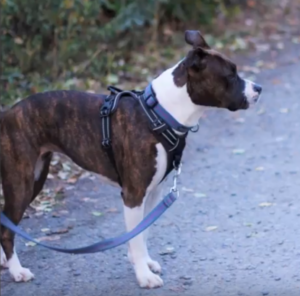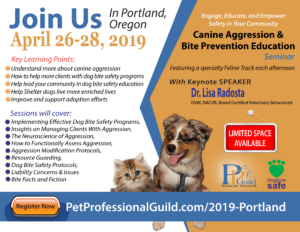Barks Blog
Portland Blog Competition: Tips to Reduce Leash Reactivity
By Michelle Wieser

When a leashed dog barks, pulls or lunges at other dogs (or wildlife, skateboards, kids, bikers, etc.), it is known as leash reactivity. Dogs may feel trapped and restricted by the leash and, unfortunately, given that they can’t voluntarily remove themselves from the situation (think fight or flight), it can lead to reactive outbursts during leashed walks if a dog is feeling threatened, anxious, stressed, fearful, or, indeed, excited to meet a stranger or another dog. Regardless of the reason, it’s not fun for anyone so here are some handling tips to help reduce or prevent leash reactivity.
Why is my dog barking and lunging?
Fear and frustration are the two most common reasons for leash reactivity. Dogs react out of frustration because the leash is restricting them from approaching something they are desperate to see. Alternatively, fearful dogs react for the opposite reason, to escape or gain distance from their triggers. In this case barking and lunging is used as a warning for other dogs (or triggers) to stay away.
The right equipment can help.
A front-attachment harness can help provide more control over a dog who is pulling or lunging. Either of these will make it easier for you to ease your dog away from triggers, instead of pulling ahead barking and lunging. Most dogs tolerate front-attachment harnesses well.
Distance is your friend.
Whether your dog is fearful or frustrated, it is important to maintain an appropriate distance from his triggers until your dog learns to feel and behave differently around them. Don’t set your dog up to practice barking and lunging as once it becomes a habit, it will take longer to change the behavior. Instead:
- When you see another dog or trigger, proactively move further away and encourage your dog to focus on you. Set your dog up to succeed.
- Walk in areas where you can see what’s coming. Straight, wide power cuts or residential sidewalks work best.
- Be aware of your surroundings. Look ahead and behind you often so you can spot oncoming triggers and move away while your dog is still able to focus on you.
- Make note of dogs who bark behind fences in your neighborhood (every neighborhood has a few). Encourage your dog to focus on you while you pass the fence at a distance that’s comfortable for your dog.
- Approach blind corners carefully. Encourage your dog to stay close as you approach a corner, and be prepared to make a quick U-turn if a trigger appears around the corner.
Getting past dogs or triggers (with grace).
You can create space from dogs and other triggers by crossing the street, ducking into a driveway, taking another route, or turning around and going the other way. Practice these maneuvers often while your dog’s triggers are not present. Get your dog used to the idea that you randomly change directions and it’s fun to follow!
You can also scatter treats on the ground or ask for tricks (like hand touches) to keep your dog engaged with you around triggers. Using food, toys and play will also help your dog create a new, positive emotional response to his triggers.
Strange dogs = fun games and treats! Instead of: Strange dogs = fear or frustration.
In this video, young Timber is learning management techniques to keep our walks fun, even when scary dogs and frustrating cats are around.
*This post is a runner up in our Portland 2019 Writers’ Competition. All winning and runner up entries will be published in the March 2019 issue of BARKS from the Guild. To learn more about canine and feline aggression, join us at the Pet Professional Guild Canine Aggression and Bite Prevention Educational Seminar (with bonus feline specialty track) in Portland, Oregon April 26-28, 2019.*
About the Author
Michelle Wieser operates Wise Canine Training and has taught and assisted in dog training programs in Whitehorse, Yukon, Canada for over 15 years through local dog training clubs. Her education includes a professional dog trainer certification from the Karen Pryor Academy of Animal Training and Behavior. In addition, she has completed coursework focused on managing fearful and reactive dogs, addressing self-control issues, increasing focus for highly distracted dogs, and developing advanced Nose Work skills. She participates in continuing education programs to ensure her clients receive the most up-to-date training based on modern research.


